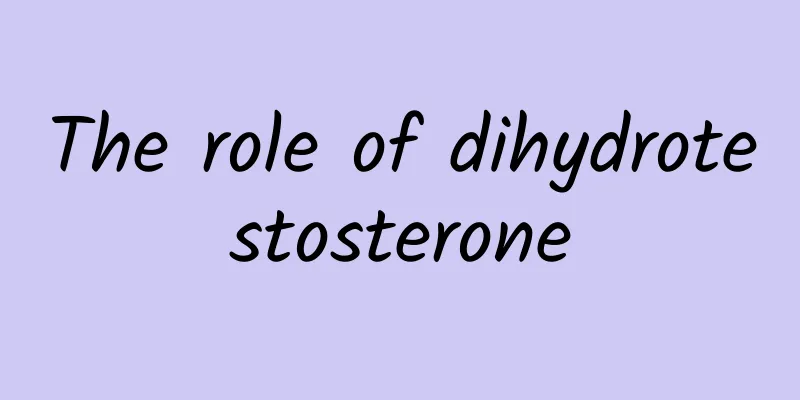The role of dihydrotestosterone

|
The testicles can produce dihydrotestosterone, which is a common male hormone. For men, it can promote the development of genitals, the normal development of the prostate, and the gradual development of secondary sexual characteristics during puberty. It can also make sperm mature gradually. In clinical practice, insufficient secretion of dihydrotestosterone often occurs, and it is also a relatively important examination indicator in clinical practice. The role of dihydrotestosterone Dihydrotestosterone can be produced directly by the testicles, or it can be converted from androgens and estrogens as precursors by surrounding tissues. It can promote the normal development of the external genitalia and prostate, has a positive effect on the appearance and maintenance of secondary sexual characteristics, and promotes the maturation of sperm in the epididymis. In clinical practice, it is mainly used for abnormal sexual differentiation caused by 5α-reductase deficiency and for the identification and diagnosis of benign prostate diseases. It is also of great significance to observe the efficacy of prostate tumors, explore the causes of sexual dysfunction, infertility, and female hirsutism. Clinical significance 1. Pathological increase (1) Observation on the recovery of prostate cancer. There are reports that measuring the dihydrotestosterone content in prostate cancer tissue can be used to judge the postoperative effect. Patients with higher levels of dihydrotestosterone in tumor tissue have longer relief intervals. (2) Prostatic hypertrophy, hirsutism in women, polycystic ovary syndrome, and hyperthyroidism all increase in risk. (3) Due to hypothalamic-pituitary dysfunction, the pituitary gland secretes increased progesterone. Sustained high levels of progesterone can stimulate the ovaries to secrete excessive amounts of dihydrotestosterone. 2. Pathological decrease (1) Low sperm count, decreased sperm motility, and a significant decrease in vasectomy patients (2) The lichen sclerosus of the female vulva is reduced. (3) Hypothyroidism, etc. (4) Familial incomplete pseudohermaphroditism type II. This is an autosomal recessive genetic disease caused by severe deficiency or non-function of 5α-reductase. Testosterone cannot be converted into active dihydrotestosterone in the target organs, resulting in decreased serum dihydrotestosterone. (5) In cases of male sexual dysfunction caused by agenesis, cryptorchidism, 17α-hydroxylase deficiency, 3β-hydroxysteroid dehydrogenase deficiency, etc., serum dihydrotestosterone may be reduced. |
<<: How to treat high testosterone
>>: How to increase testosterone
Recommend
Causes of Male Infertility
Many people will put the blame on women for infer...
Why do men get angry?
We often hear people say that they are getting an...
Men have pain in the middle of their lower back
Intervertebral disc disease can also cause low ba...
What medicine can delay ejaculation?
Many male friends want to prolong the time of the...
How to cook cumin squid, how to cook cumin squid at home
Squid is a popular food, rich in protein, calcium...
What are the precautions after hydrocele surgery?
The treatment of hydrocele includes medication an...
The thing a man fears most in his life is just one word
Erectile dysfunction is a condition in which the ...
Why do men vomit in disgust?
It is inevitable that we will have dizziness in o...
What to do if your hair turns grey due to masturbation?
Young men who do not have sexual partners and liv...
What is the disease of dizziness and tinnitus in men
Nowadays, more and more people are suffering from...
Can laser shrink pores? What are the methods to shrink pores?
In life, there are many ways to shrink pores for ...
Can pork liver and tomatoes be eaten together? The answer is shocking!
As we all know, pork liver contains a lot of nutr...
Is essential oil for men's breast reduction useful?
When a man marries a wife, he will become very la...
My husband is taking Liuwei Dihuang Pills to prepare for pregnancy
Liuwei Dihuang Pills is a traditional Chinese med...
How to make garlic paste for roasted oysters and precautions when eating
Everyone knows that oysters have a strong aphrodi...









